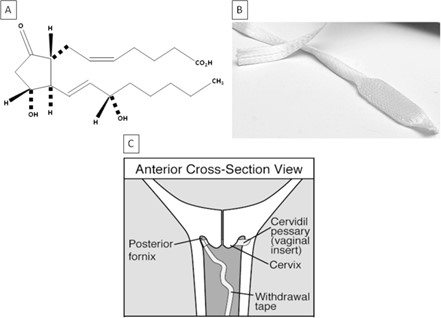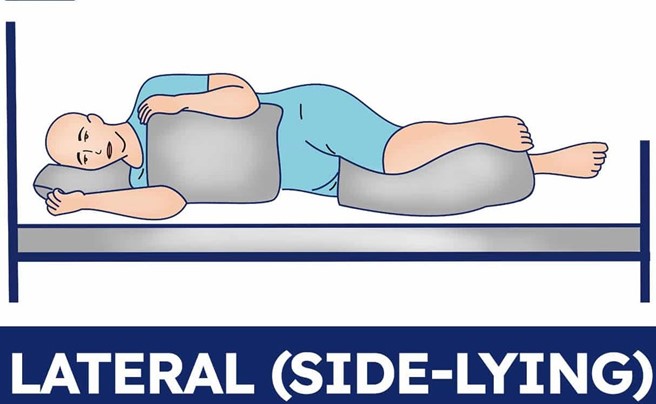A nurse is caring for a client who is postpartum and asks, "When will my breast milk come in?" Which of the following responses should the nurse make?
In 3 to 5 days after delivery
In 6 to 8 days after delivery
Within 2 days after delivery
In about 10 days after delivery
The Correct Answer is A
Choice A reason: In 3 to 5 days after delivery is correct, as this is the average time for breast milk production to begin after birth. Breast milk production is stimulated by the drop in progesterone levels that occurs after the placenta is delivered, as well as by the suckling of the baby. The nurse should encourage the client to breastfeed frequently and effectively to promote milk production and prevent engorgement.
Choice B reason: In 6 to 8 days after delivery is incorrect, as this is a longer than average time for breast milk production to begin after birth. Breast milk production usually begins within the first week after birth, although it may vary depending on individual factors. The nurse should assess the client for any factors that may delay or inhibit milk production, such as stress, fatigue, pain, or medication.
Choice C reason: Within 2 days after delivery is incorrect, as this is a shorter than average time for breast milk production to begin after birth. Breast milk production usually begins within the first week after birth, although it may vary depending on individual factors. The nurse should educate the client that before breast milk comes in, the breasts produce colostrum, which is a thick, yellowish fluid that contains antibodies and nutrients for the baby.
Choice D reason: In about 10 days after delivery is incorrect, as this is a longer than average time for breast milk production to begin after birth. Breast milk production usually begins within the first week after birth, although it may vary depending on individual factors. The nurse should assess the client for any factors that may delay or inhibit milk production, such as stress, fatigue, pain, or medication.

Nursing Test Bank
Naxlex Comprehensive Predictor Exams
Related Questions
Correct Answer is B
Explanation
Choice A reason:
Dinoprostone stimulates uterine contractions is incorrect, as this is not the primary purpose of the medication. Dinoprostone is a prostaglandin that can induce labor by ripening the cervix and enhancing uterine contractility, but it is not used solely for stimulating contractions.
Choice B reason:
Dinoprostone promotes softening of the cervix is correct, as this is the main purpose of the medication. Dinoprostone is used to prepare the cervix for labor by increasing its softness, dilation, and effacement. This can facilitate the descent of the fetus and shorten the duration of labor.
Choice C reason:
Dinoprostone relaxes uterine contractions is incorrect, as this is the opposite effect of the medication. Dinoprostone can increase uterine tone and frequency, which can help initiate or augment labor. The nurse should monitor the client for signs of uterine hyperstimulation or fetal distress.
Choice D reason:
Dinoprostone assists with ending the pregnancy is incorrect, as this is not the intended use of the medication. Dinoprostone can be used to terminate a pregnancy in some cases, such as fetal demise or missed abortion, but it is not routinely used for this purpose. The nurse should explain to the client that dinoprostone is used to induce labor and not to end a pregnancy.

Correct Answer is A
Explanation
Choice A reason:
Placing the client in a lateral position is the first action the nurse should take, as it can improve maternal and fetal circulation by relieving pressure on the inferior vena cava. The client's blood pressure is low, which can indicate hypotension due to epidural anesthesia or supine hypotension syndrome.
Choice B reason:
Notifying the provider is an important action, as it can facilitate further interventions and monitoring for the client and the fetus. However, this is not the first action the nurse should take, as it does not address the immediate problem of hypotension.
Choice C reason:
Increasing IV fluid rate is an important action, as it can expand blood volume and increase blood pressure. However, this is not the first action the nurse should take, as it may not be effective if the client is in a supine position.
Choice D reason:
Elevating the legs is an important action, as it can enhance venous return and increase blood pressure. However, this is not the first action the nurse should take, as it may worsen supine hypotension syndrome by increasing pressure on the inferior vena cava.

Whether you are a student looking to ace your exams or a practicing nurse seeking to enhance your expertise , our nursing education contents will empower you with the confidence and competence to make a difference in the lives of patients and become a respected leader in the healthcare field.
Visit Naxlex, invest in your future and unlock endless possibilities with our unparalleled nursing education contents today
Report Wrong Answer on the Current Question
Do you disagree with the answer? If yes, what is your expected answer? Explain.
Kindly be descriptive with the issue you are facing.
